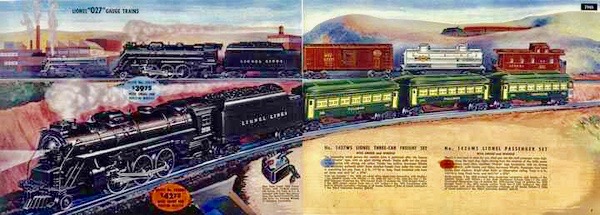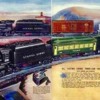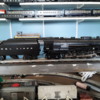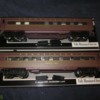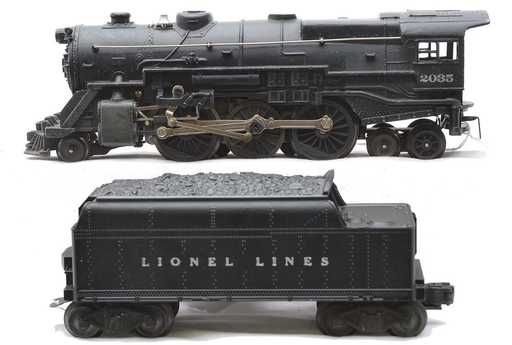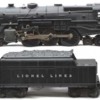I never said that traditional pre- and postwar trains weren't enjoyable. I'm sorry I couldn't view your video Steamer, it just sits there trying to load.
I challenge you both to an experiment... Measure the longest mainline path on your layout. Turn on the throttle, get it running smoothly, and see if the loco will complete 10 laps at an average speed of 25 scale mph without stalling. For an extra challenge, try it running light with no freight cars. If it makes it around, you'll notice that it slows to a crawl in some places and hurtles along in others. Yes vintage trains have a charm of their own, but these were toys meant for children, and very much meant to be run "hands-on." Many of these locos bear the scars from times when they got out of control- broken marker lights, bent pilot steps, bent roofs, etc.
Spotting a car at an accessory like the cattle pen is another challenge. Diesels are pretty good. Dual-motored locos are very good! But most steam are a little balky. I had a Lionel 675 (the earliest 1947 version.) The motor was smooth and quiet, but it had a habit of starting to roll before the E-unit cycled. Sometimes the E-unit would cycle while the loco was still moving slowly. This made it difficult to uncouple or spot a car where you wanted to.
I agree that computer control isn't needed, but a low gear ratio is a good thing. The MTH train set locos circa 1999 didn't have speed control. Neither did early versions of the K-Line A5 switcher. But they are smoother and better controlled than any traditional-sized train made before 1951. I'm not a fan of the rubber tires, and replacement parts will be a problem 20 years from now. But on balance the newer locos are better runners. The original poster wanted an informed decision, so I don't mind being the devil's advocate. 




